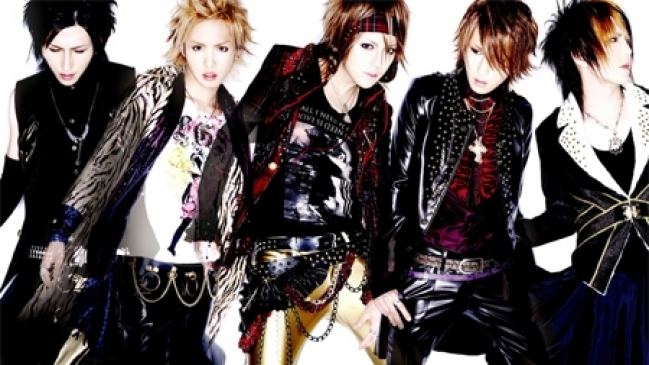 | ||
Japanese rock (Japanese: 日本のロック, Hepburn: Nihon no Rokku), sometimes abbreviated to J-rock (ジェイ・ロック, Jei Rokku), is rock music from Japan. Influenced by American and British rock of the 1960s, the first rock bands in Japan performed what is called Group Sounds, with lyrics almost exclusively in English. Folk rock band Happy End in the early 1970s are credited as the first to sing rock music in the Japanese language. Punk rock band the Blue Hearts and heavy metal group X Japan, led Japanese rock bands in the late 1980s and early 1990s by achieving major mainstream success. Japanese rock music has become a cult worldwide, being widely known in Asia and has survived through decades competing with its contemporary derivative local style J-pop.
Contents
- J rocks fallin in love official video
- 1960s Western music adaptation
- 1970s Folk and experimental phase
- 1980s Original band boom punk and visual kei
- 1990s2000s Peak and later decline
- 2010s New band boom overseas recognition
- Visual Kei
- Heavy metal
- Extreme metal
- Japanese rock in the English language
- New Indie
- Culture
- Market Value
- Global Impact
- References
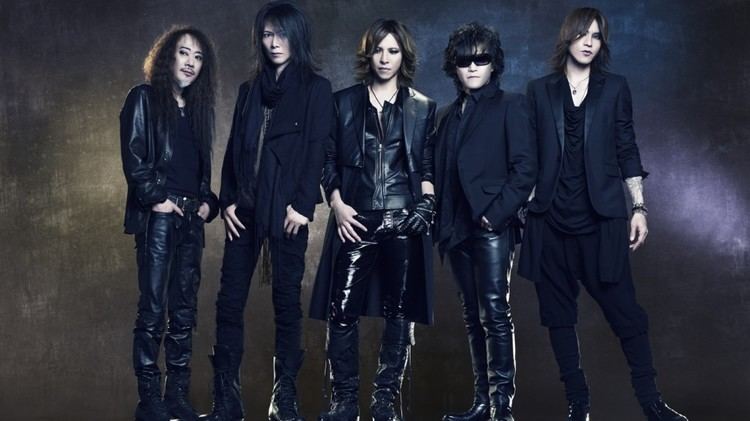
J rocks fallin in love official video
1960s: Western music adaptation
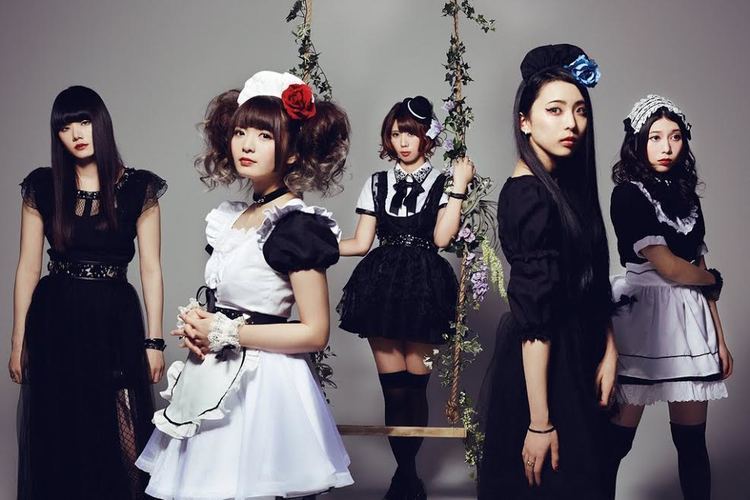
In the 1960s, many Japanese rock bands were influenced by Western rock musicians such as the Beatles, Bob Dylan, and the Rolling Stones, along with other Appalachian folk music, psychedelic rock, mod and similar genres: a phenomenon that was called Group Sounds (G.S.). John Lennon of the Beatles later became one of the most popular Western musicians in Japan. Group Sounds is a style of Japanese rock music that was popular in the mid to late 1960s. After the boom of Group Sounds, there were several influential singer-songwriters. Nobuyasu Okabayashi was the first who became widely recognized. Wataru Takada, inspired by Woody Guthrie, also became popular.. They both were influenced by American folk music but wrote Japanese lyrics. Takada used modern Japanese poetry as lyrics, while Kazuki Tomokawa made an album using Chuya Nakahara's poems. Tomobe Masato, inspired by Bob Dylan, wrote critically acclaimed lyrics. The Tigers were the most popular Group Sounds band in the era. Later, some of the members of the Tigers, the Tempters, and the Spiders formed the first Japanese supergroup, Pyg.
1970s: Folk and experimental phase

Homegrown Japanese folk rock had developed by the late 1960s. Happy End are credited as the first rock band to sing in the Japanese language. During the 1970s, it grew more popular. The Okinawan band Champloose, along with Carol (led by Eikichi Yazawa), RC Succession and Shinji Harada were especially famous and helped define the genre's sound. Sometimes also beginning in the late sixties, but mostly active in the seventies, are musicians mixing rock music with American-style folk and pop elements, usually labelled "folk" by the Japanese because of their regular use of the acoustic guitar. This includes bands like Off Course, Tulip, Alice (led by Shinji Tanimura), Kaguyahime, Banban, Garo and Gedō. Solo artists of the same movement include Yosui Inoue, Yuming, and Iruka. Later groups, like Kai Band (led by Yoshihiro Kai) and early Southern All Stars, are often attached to the same movement.

Several Japanese musicians began experimenting with electronic rock in the early 1970s. The most notable was the internationally renowned Isao Tomita, whose 1972 album Electric Samurai: Switched on Rock featured electronic synthesizer renditions of contemporary rock and pop songs. Other early examples of electronic rock records include Inoue Yousui's folk rock and pop rock album Ice World (1973) and Osamu Kitajima's progressive psychedelic rock album Benzaiten (1974), both of which involved contributions from Haruomi Hosono, who later started the electronic music group "Yellow Magic Band" (later known as Yellow Magic Orchestra) in 1977. Most influentially, the 1970s spawned the electronic music band Yellow Magic Orchestra, led by Haruomi Hosono.
1980s: Original band boom, punk and visual kei
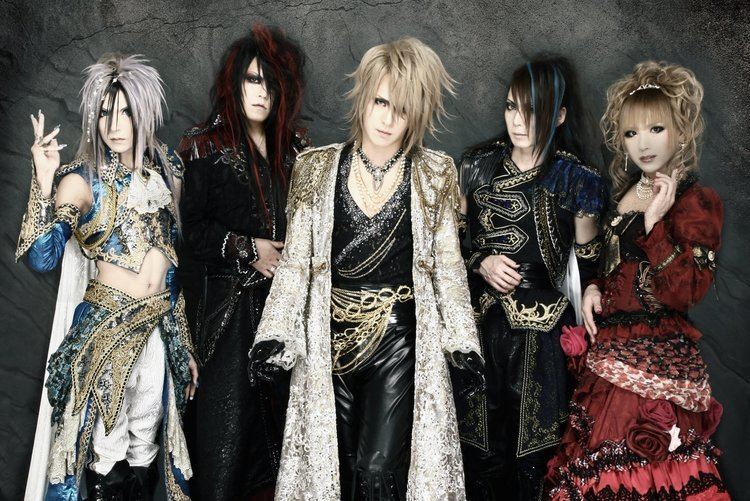
Early examples of Japanese punk rock include SS, the Star Club, the Stalin, Inu, Gaseneta, Bomb Factory, Lizard (who were produced by the Stranglers) and Friction (whose guitarist Reck had previously played with Teenage Jesus and the Jerks before returning to Tokyo) and the Blue Hearts. The early punk scene was immortalized on film by Sogo Ishii, who directed the 1982 film Burst City featuring a cast of punk bands/musicians and also filmed videos for The Stalin. In the 1980s, Japanese hardcore bands such as GISM, Gauze, Confuse, Lip Cream and Systematic Death began appearing, some incorporating crossover elements. The independent scene also included a diverse number of alternative/post-punk/new wave artists such as Aburadako, P-Model, Uchoten, Auto-Mod, Buck-Tick, Guernica and Yapoos (both of which featured Jun Togawa), G-Schmitt, Totsuzen Danball, and Jagatara, along with noise/industrial bands such as Hijokaidan and Hanatarashi.
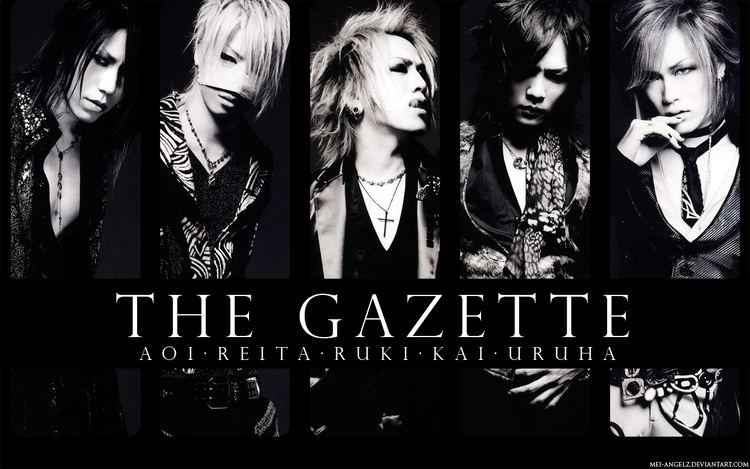
In the 1980s, acts such as Boøwy inspired what is called the "Band Boom" (バンドブーム, Bando Būmu), popularizing the formation of rock groups. In 1980, Huruoma and Ry Cooder, an American musician, collaborated on a rock album with Shoukichi Kina, driving force behind the aforementioned Okinawan band Champloose. They were followed by Sandii & the Sunsetz, who further mixed Japanese and Okinawan influences. Alternative rock bands like Shonen Knife, Boredoms and The Pillows formed. Also during the 1980s, Japanese metal and rock bands gave birth to the movement known as visual kei, represented during its history by bands like X Japan, Buck-Tick, Luna Sea, Malice Mizer and many others, some of which experienced national, and international success in the latest years.
1990s–2000s: Peak and later decline
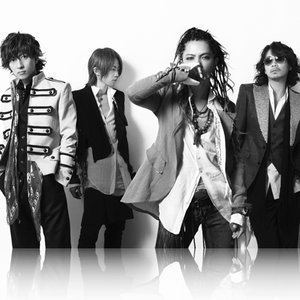
In the 1990s, Japanese rock musicians such as B'z, Mr. Children, Glay, Southern All Stars, L'Arc-en-Ciel, Tube, Spitz, Wands, T-Bolan, Judy and Mary, Asian Kung–Fu Generation, Field of View, Deen, Ulfuls, Lindberg, Sharam Q, the Yellow Monkey, the Brilliant Green and Dragon Ash achieved great commercial success. B'z is the #1 best selling act in Japanese music since Oricon started to count., followed by Mr. Children. In the 1990s, pop songs were often used in films, anime, television advertisement and dramatic programming, becoming some of the best-selling forms of music in Japan. The rise of disposable pop has been linked with the popularity of karaoke, leading to criticism that it is consumerist: Kazufumi Miyazawa of the Boom said "I hate that buy, listen, and throw away and sing at a karaoke bar mentality." Of the visual kei bands, Luna Sea, whose members toned down their on-stage attire with on-going success, was very successful, while Malice Mizer, La'cryma Christi, Shazna, Janne Da Arc, and Fanatic Crisis also achieved commercial success in the late 1990s. Ska-punk bands of the late nineties extending in the years 2000 include Shakalabbits and 175R (pronounced "inago rider").
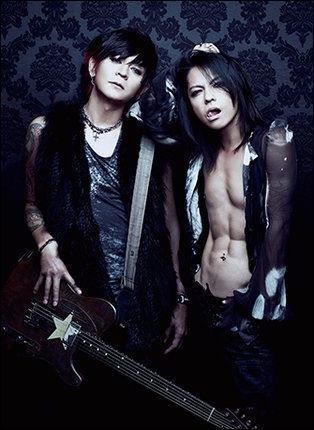
The first Fuji Rock Festival opened in 1997. Rising Sun Rock Festival opened in 1999. Summer Sonic Festival and Rock in Japan Festival opened in 2000. Though the rock scene in the 2000s is not as strong, newer bands such as Bump of Chicken, ONE OK ROCK, Sambomaster, Flow, Orange Range, Remioromen, Uverworld, Radwimps, and Aqua Timez, which are considered rock bands, have achieved success. Orange Range also adopts hip hop. Established bands as B'z, Mr. Children, Glay, and L'Arc-en-Ciel also continue to top charts, though B'z and Mr. Children are the only bands to maintain a high standards of their sales along the years.
Japanese rock has a vibrant underground rock scene, best known internationally for noise rock bands such as Boredoms and Melt Banana, as well as stoner rock bands such as Boris and alternative acts such as Shonen Knife (who were championed in the West by Kurt Cobain), Pizzicato Five, and the Pillows (who gained international attention in 1999 for the FLCL soundtrack). More conventional indie rock artists such as Eastern Youth, the Band Apart and Number Girl have found some success in Japan, but little recognition outside of their home country. Other notable international touring indie rock acts are Mono and Nisennenmondai.
2010s: New band boom, overseas recognition
During the late 2000s there was an increasing number of bands that had built up a strong fan base prior to their main break-through in the music industry. Indie band flumpool sold over one million copies of their first digital single 'Hana ni nare'. Sakanaction made their first live concert at Nippon Budokan while enjoying major success with their singles "Aruku Around" and "Rookie". Sakanaction was pinned as a different type of band since they experimented with electronic music and synthrock. Other bands that have gone mainstream included Gesu no Kiwami Otome, Sekai no Owari and Alexandros. Because of the sudden major increase on indie bands and rock bands in general that compete with contemporary J-Pop artists, the movement is been referred to as a band boom by the media and is been praised as a change to the Japanese music in general. Since these bands don't rely in a very heavy sound but take a softer, catchier approach, they have been proved to be more appealing to pop fans that are not familiar with rock.
Veteran rock bands like L'Arc~en~Ciel and X Japan outsold concerts at Madison Square Garden in 2012 and 2014 respectively among other large arenas through the United States. One Ok Rock performed at the Taipei Arena being the first time a Japanese band did so and additionally sold out shows at the AsiaWorld-Arena and Mall of Asia Arena, these two being the largest overseas shows they had to date with an average attendance of 12,000 people at each concert.
Visual Kei
Visual Kei is a rock movement mainly identified by its heavy use of visuals and elaborate make up and concepts.
Heavy metal
Japan is known for being a successful area for metal bands touring around the world and many live albums are recorded in Japan. Notable examples are Judas Priest's Unleashed in the East, Iron Maiden's Maiden Japan, Deep Purple's Made in Japan, Michael Schenker Group's One Night at Budokan, and Dream Theater's Live at Budokan.
Japanese heavy metal bands started emerging in the late 1970s, pioneered by bands like Bow Wow, formed in 1975 by guitarist Kyoji Yamamoto, and Loudness, formed in 1981 by guitarist Akira Takasaki. Although there existed other contemporary bands, like Earthshaker, Anthem, and 44 Magnum, their debut albums were released only around the mid eighties when metal bands started getting a major exposure. First oversease live performances were by Bow Wow in 1978 in Hong Kong and at the Montreux Jazz Festival in Switzerland, as well played at the Reading Festival in England in 1982. In 1983, Loudness toured United States and Europe, and started focusing more on an international career. In 1985, the first Japanese metal act was signed to a major label in the United States. Their albums Thunder in the East and Lightning Strikes, released in 1985 and 1986, peaked at number 74 (while number 4 in homeland Oricon chart), and number 64 in the Billboard 200 charts respectively. Till the end of the eighties only two other bands, Ezo and Dead End, got their albums released in the United States. In the eighties few bands had a female members, like all-female band Show-Ya fronted by Keiko Terada, and Terra Rosa with Kazue Akao on vocals. In September 1989, Show-Ya's album Outerlimits was released, it reached number 3 in the Oricon album chart. Heavy metal bands reached their peak in the late 1980s and many disbanded until the mid-1990s.
In 1982, some of the first Japanese glam metal bands were formed, like Seikima-II with Kabuki-inspired makeup, and X Japan who pioneered the Japanese movement known as visual kei, and became the best-selling metal band. In 1985, Seikima-II's album Seikima-II - Akuma ga Kitarite Heavy Metal was released and although it reached number 48 on the Oricon album chart, it exceeded 100,000 in sales, the first time for any Japanese metal band. Their albums charted regularly in the top ten until the mid 1990s. In April 1989, X Japan's second album Blue Blood was released and went to number 6, and after 108 weeks on charts sold 712,000 copies. Their third and best-selling album Jelaousy was released in July 1991; it topped the charts and sold 1.11 million copies. There were released more two number one studio albums, Art of Life and Dahlia, a singles compilation X Singles, all selling more than half a million, and since the formation had thirteenth top five singles, disbanding in 1997.
Japanese metal came to global attention in 2014 with the international success of "kawaii metal" band Babymetal. This was brought about through viral youtube hit Gimme Chocolate!! as well as successful live shows in the UK at the Sonisphere Festival 2014 and at Canada's Heavy Montréal 2014 alongside the likes of Metallica and Slayer. Babymetal was also the opening act to five of Lady Gaga's concerts in her "ArtRave: The Artpop Ball" 2014 tour. In 2016 they are due to begin a world tour at London's Wembley Arena before concluding in Japan with the band's debut performance in the Tokyo Dome.
Extreme metal
Japanese extreme metal bands formed in the wake of American and European wave, but didn't get any bigger exposure until the 1990s, and like overseas the genre is usually treated as an underground form of music in Japan. First thrash metal bands formed in the early 1980s, like United, whose music also incorporates death metal elements, and Outrage. United's first international performance took place in Los Angeles at the metal festival "Foundations Forum" in September 1995 and had few albums released in North America. Formed in the mid 1980s, Doom played a gig in the United States in October 1988 at CBGB, and was active until 2000 when disbanded.
The first bands to play black metal music were Sabbat, who is still active, and Bellzlleb, who was active until the early 1990s. Another notable act is Sigh.
Doom metal has also gained an audience in Japan. The two best-known Japanese doom metal acts are Church of Misery and Boris, both of whom have gained considerable popularity outside the country.
Japanese rock in the English language
During the late 2000s to the early 2010s there has been an increase in the number of Japanese rock bands that are fluent in English and perform in this language in its majority. Ellegarden was the first band to achieve mainstream success by singing only in English and is thought to be a turning point into the punk rock scene where other bands started adding more English lyrics to their songs. SiM, Alexandros, Man with a Mission, Coldrain, Nothing's Carved in Stone and One Ok Rock are prominent bands known by their heavy use of English lyrics in their albums. These bands are mainly influenced by western music and have a pretty simple concept which makes them more appealing to western audiences. ONE OK ROCK along with other bands have continuously toured the U.S and other English speaking countries.
New Indie
New bands that have subtle jazz, classic and alternative pop influences on their music have gone mainstream within the Japanese market. Through the use of groovy and catchy chorus and breakdowns in their music they have been tagged as a new movement from the new band boom. Although not always, usually the vocalists have high pitched voices as well that can range from soft singing to yelling and progressive rapping. The most recognizable bands within the genre are Gesu no Kiwami Otome, Sekai no Owari, KANA-BOON and Sakanaction.
Culture
Japanese rock music is being embraced widely around Japan and has proven to be popular with both female and male audiences. There are several rock bands in Japan where all the members are female like Scandal, Silent Siren, Stereopony, Shonen Knife, Babymetal, Zone and Band-Maid. There are also mixed groups with female vocalists like The Brilliant Green and Tokyo Jihen. Visual Kei fashion is also adopted by the public and is believed to have influenced many Asian artists image. Widely known figures that portrayed Visual Kei fashion are Miyavi, Gackt and hide. The general opinion praises Japanese rock bands for their appearance of freedom and passion since almost every band start together as a group and later develop their music while testing themselves and improving their artistry. This means the members are usually the ones behind the formation of a group and later are signed in to a records label where they can promote and expand their target audience eventually. FT Island's Hongki highlighted the fact that in South Korea they were treated as idols who can play instruments while in Japan they were seen as a full-fledged band.
Shiina Ringo is known for her contribution to the Japanese rock community, whose musical genres are based on jazz rock and experimental punk.
Market Value
Japanese rock duo B'z is currently the best selling artist in Japan with over 86 million confirmed records sold and they are speculated to have sold 100 million worldwide. The duo are also the first Asian band to be inducted in the Hollywood's RockWalk.
The demand for rock in Japan is so huge that festivals mainly focused on rock like the Fuji Rock Festival have been introduced since the late 90s with attendances reaching a peak of 200,000 people per festival making it the largest outdoor music event in Japan.
Global Impact
Japanese rock has influenced some musical acts from outside Japan who have claimed to be fans of the music genre at some point during their musical careers. Additionally several J-Rock artists have been praised in the past by international media and musicians for their music quality and concept.
